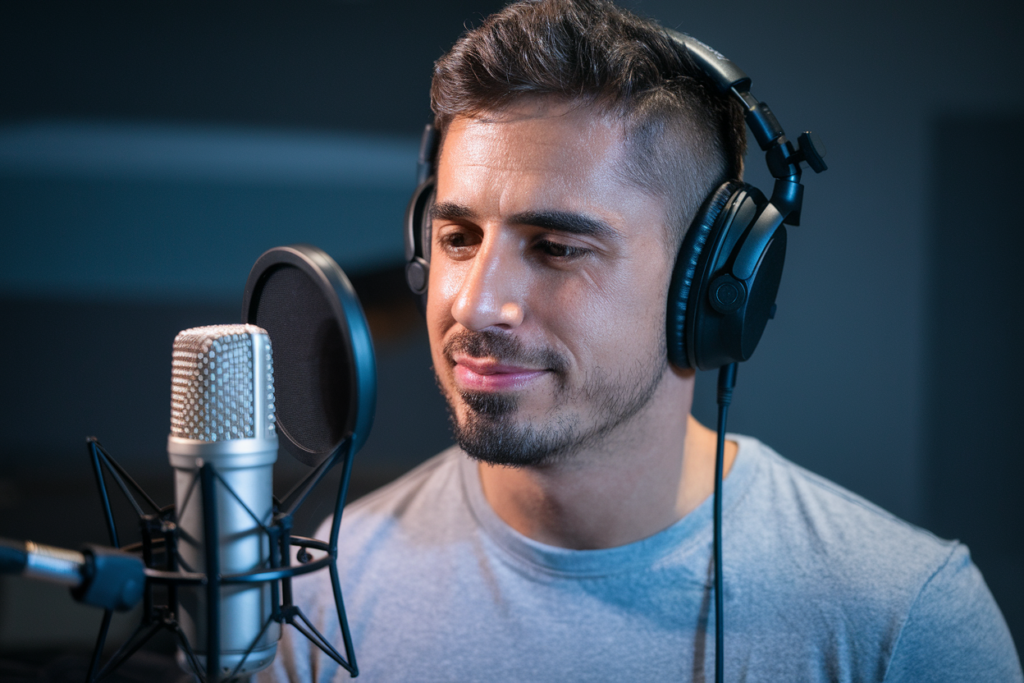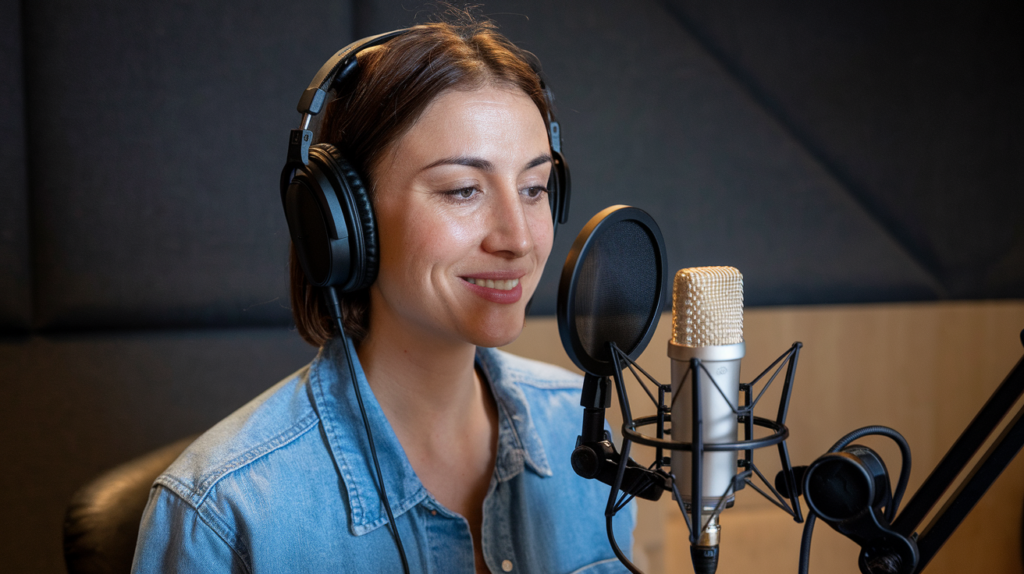When it comes to capturing the essence of Galician music, sound quality can make or break a recording. I’ve experienced firsthand how even the most talented artists can be overshadowed by poor audio fidelity. That’s why optimizing sound quality in Galician recordings is crucial for preserving this rich cultural heritage and sharing it with the world.
Overview of Sound Quality Optimization
Optimizing sound quality in Galician recordings involves several key techniques and practices. I focus on these areas to ensure clarity and richness in audio fidelity:
- Microphone Selection
Choosing the right microphones captures the nuances of instruments and vocals effectively. High-quality condenser microphones are often preferred for their sensitivity. - Acoustic Treatment
Implementing acoustic treatment in recording spaces minimizes unwanted reflections and background noise. Using sound-absorbing materials like foam panels enhances overall sound clarity. - Proper Placement
Positioning microphones correctly impacts the quality of recordings significantly. Experimenting with distance and angle can reveal optimal placement for capturing specific sounds. - Mixing Techniques
Applying professional mixing techniques balances different audio elements, ensuring no single part overpowers others. Utilizing equalization, compression, and reverb contributes to a polished final product. - Monitoring Equipment
Investing in high-quality monitoring equipment allows for accurate listening during recording sessions. Accurate studio monitors help identify issues that may not be apparent through standard speakers. - Post-Production Editing
Engaging in thorough post-production editing refines recordings further by removing imperfections or undesirable noise artifacts while maintaining artistic integrity.
By concentrating on these aspects, I enhance the auditory experience of Galician music, making it accessible and enjoyable for wider audiences while preserving its cultural essence.
Importance of High-Quality Recordings
High-quality recordings prove essential for capturing the essence of Galician music. They ensure the authenticity and richness of sound, allowing audiences to appreciate the cultural nuances.
Cultural Significance
Cultural heritage thrives on accurate representation. High-quality recordings preserve traditional sounds and convey emotions integral to Galician identity. By optimizing sound quality, I maintain fidelity to the original performances, ensuring that future generations can experience this vibrant culture authentically.
Technical Benefits
Technical advantages stem from high-quality recordings. Clear audio enhances listener engagement by minimizing distractions caused by distortion or background noise. Implementing advanced recording techniques improves clarity and detail, resulting in a more immersive experience. Properly mixed tracks balance instruments effectively, creating a polished final product that resonates well across various playback systems.
Techniques for Optimizing Sound Quality
Optimizing sound quality in Galician recordings involves several key techniques. Each technique contributes to achieving a clear and authentic auditory experience.
Equipment Selection
Choosing high-quality microphones is crucial for capturing the nuances of Galician music. Directional microphones excel at isolating sounds from specific sources, while condenser microphones capture a broader frequency range, enhancing overall fidelity. I prioritize using preamps that offer low noise levels and high gain, as this combination improves signal clarity. Additionally, investing in audio interfaces with high-resolution converters ensures accurate digital representation of analog signals.
Recording Environment
Creating an ideal recording environment significantly impacts sound quality. I implement acoustic treatment by using sound-absorbing panels and bass traps to minimize unwanted reflections and echoes. Selecting a quiet space free from external noise distractions enhances clarity during recording sessions. Arranging instruments strategically within the space also optimizes sound capture; placing them away from walls prevents phase issues and maintains balance across frequencies.
Post-Production Techniques
Post-production plays a vital role in refining audio recordings. Employing professional mixing techniques allows me to achieve balance among different audio elements, ensuring each instrument complements the others without overpowering them. Utilizing equalization (EQ) helps enhance desired frequencies while reducing unwanted ones, allowing the essence of Galician music to shine through clearly. Compression further smooths out volume variations, providing consistency throughout tracks. Finally, thorough editing preserves artistic integrity while eliminating any extraneous noise or artifacts that may detract from the listening experience.
Case Studies in Galician Recordings
I examined various case studies that demonstrate effective sound quality optimization in Galician recordings. Each example highlights specific techniques and practices that enhance audio fidelity while preserving cultural richness.
- Traditional Folk Music Recording
I analyzed a project focused on traditional Galician folk music. The recording utilized high-quality condenser microphones placed strategically to capture the nuances of instruments like the gaita and tamboril. Acoustic treatment was implemented to reduce reflections, resulting in clear and vibrant sound capturing the essence of the genre. - Modern Fusion Album
I explored a modern fusion album blending Galician music with contemporary genres. This project employed low-noise preamps and high-resolution audio interfaces to ensure clarity throughout the recording process. Professional mixing techniques balanced traditional melodies with electronic elements, creating an engaging listening experience without sacrificing authenticity. - Live Performance Capture
I reviewed a live concert recording featuring renowned Galician artists. The use of directional microphones minimized crowd noise, allowing for detailed instrument capture amidst a lively atmosphere. Post-production editing refined dynamics, ensuring each performance’s energy translated effectively to studio quality. - Acoustic Duo Session
In another case study, an acoustic duo recorded their session in a treated room designed for optimal acoustics. By placing microphones at varying distances from instruments, they achieved rich harmonics and depth in their final mix. Equalization during post-production further enhanced tonal balance across vocals and guitar. - Cultural Heritage Documentation
I investigated efforts to document Galician cultural heritage through field recordings of oral traditions and storytelling sessions. Employing portable recording equipment with high sensitivity allowed for capturing subtle details while minimizing background noise from natural environments, thus preserving authentic regional sounds.
These case studies illustrate how intentional choices regarding equipment, environment, and production practices significantly impact sound quality in Galician recordings, making them resonate deeply with audiences both locally and globally.
Challenges in Sound Quality Optimization
Sound quality optimization in Galician recordings faces several challenges that require attention.
- Environmental Limitations
Environmental factors, like background noise and room acoustics, can significantly affect sound capture. Poorly treated spaces often introduce unwanted reflections and echoes that compromise audio fidelity. - Equipment Selection
Equipment choices impact sound quality directly. Using low-quality microphones or preamps leads to less accurate sound reproduction, diminishing the overall recording clarity. - Technical Expertise
Lack of technical knowledge among producers can hinder effective sound optimization. Understanding microphone placement, mixing techniques, and acoustic treatment principles is essential for achieving high-quality results. - Budget Constraints
Limited budgets restrict access to professional-grade equipment and studio environments necessary for optimal recordings. Compromising on gear often results in subpar audio quality. - Artistic Intent vs Technical Requirements
Balancing artistic vision with technical requirements presents a challenge during production processes. Sometimes, an artist’s creative preferences may conflict with established audio engineering practices needed for clarity. - Post-Production Pressure
Tight deadlines during post-production may rush editing processes, leading to compromises on mixing and mastering quality that affect the final output’s polish.
Addressing these challenges involves strategic planning and investment in both equipment and expertise to achieve superior sound quality in Galician music recordings.
Conclusion
Optimizing sound quality in Galician recordings isn’t just a technical necessity; it’s a commitment to preserving cultural heritage. By investing time and resources into the right equipment and techniques, I can ensure that the true essence of Galician music shines through.
Every element from microphone selection to post-production plays a crucial role in creating an engaging listening experience. With thoughtful planning and execution, I can overcome challenges and elevate these recordings to resonate with audiences everywhere. Embracing these practices not only enriches my work but also honors the rich legacy of Galician music for future generations to enjoy.








